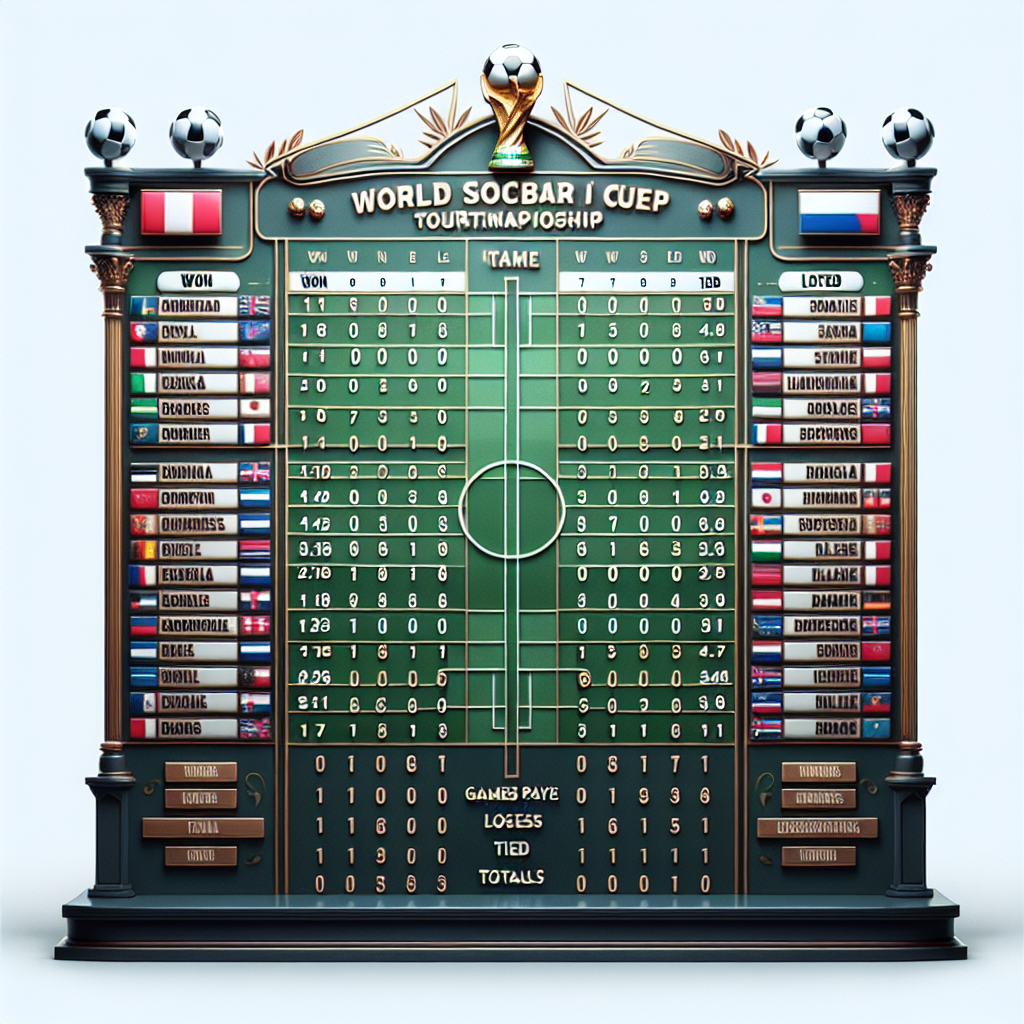
The World Cup, whether in football, cricket, or rugby, is one of the most anticipated sporting events globally. It brings together nations, fans, and athletes in a celebration of skill, strategy, and sportsmanship. Central to the tournament's structure is the team points table, a critical component that determines which teams advance to the knockout stages. This article delves into the intricacies of the World Cup team points table, exploring its significance, structure, and impact on the tournament's progression.
The Importance of the Points Table
The points table is more than just a scoreboard; it is a dynamic reflection of a team's performance throughout the tournament. It serves several essential functions:
- Ranking Teams: The primary purpose of the points table is to rank teams based on their performance in the group stage. This ranking determines which teams advance to the knockout rounds.
- Encouraging Competitive Play: By assigning points for wins, draws, and sometimes even losses, the table incentivizes teams to perform at their best in every match.
- Providing Clarity: The points table offers a clear and concise overview of the tournament's progress, making it easier for fans and analysts to track their favorite teams.
Structure of the Points Table
The structure of the points table can vary slightly depending on the sport, but the fundamental components remain consistent. Here is a breakdown of the typical elements found in a World Cup points table:
- Matches Played (P): The total number of matches a team has played.
- Wins (W): The number of matches a team has won.
- Draws (D): The number of matches that ended in a draw (applicable in sports like football).
- Losses (L): The number of matches a team has lost.
- Points (Pts): The total points a team has accumulated, usually awarded as follows:
- Win: 3 points
- Draw: 1 point
- Loss: 0 points
- Goal Difference (GD) or Net Run Rate (NRR): A tiebreaker metric used to rank teams with equal points. In football, this is the difference between goals scored and goals conceded. In cricket, it is the net run rate.
Case Study: FIFA World Cup Points Table
The FIFA World Cup is the pinnacle of international football, and its points table is a crucial element in determining the tournament's progression. Let's examine how the points table played a pivotal role in the 2018 FIFA World Cup:
In the group stage, each team played three matches. The top two teams from each group advanced to the Round of 16. The points table was instrumental in deciding the fate of several teams. For instance, in Group F, Germany, the defending champions, were eliminated after finishing fourth in their group. Despite having the same number of points as South Korea, Germany's inferior goal difference led to their early exit.
Case Study: ICC Cricket World Cup Points Table
The ICC Cricket World Cup employs a similar points table system, with some variations to accommodate the sport's unique aspects. In the 2019 ICC Cricket World Cup, each team played nine matches in a round-robin format. The top four teams advanced to the semi-finals.
New Zealand's journey to the final was a testament to the importance of the points table. They finished fourth in the group stage, edging out Pakistan due to a superior net run rate, despite both teams having the same number of points. This highlights how crucial every run and wicket can be in determining a team's fate.
Strategies for Success: Maximizing Points
Teams employ various strategies to maximize their points and improve their standings in the points table. Here are some common approaches:
- Consistent Performance: Consistency is key in accumulating points. Teams aim to win as many matches as possible to secure their position in the knockout stages.
- Goal or Run Management: In sports where goal difference or net run rate matters, teams focus on scoring heavily and minimizing concessions to improve their tiebreaker metrics.
- Strategic Resting: In longer tournaments, teams may rest key players in less critical matches to ensure peak performance in crucial games.
The Role of Fans and Media
The points table is not just a tool for teams and coaches; it also plays a significant role in engaging fans and media. Here's how:
- Fan Engagement: Fans closely follow the points table to track their favorite team's progress and speculate on potential matchups in the knockout stages.
- Media Analysis: Sports analysts and commentators use the points table to provide insights and predictions, adding depth to their coverage.
- Social Media Buzz: The points table often becomes a trending topic on social media, with fans sharing their thoughts and reactions to the latest standings.
Challenges and Controversies
While the points table is a vital component of the World Cup, it is not without its challenges and controversies. Some common issues include:
- Tiebreaker Disputes: When teams are tied on points, the reliance on goal difference or net run rate can lead to debates about fairness, especially if weather conditions or other factors influence results.
- Match Fixing Concerns: In rare cases, teams may be accused of manipulating results to influence the points table, leading to investigations and sanctions.
- Complex Calculations: The calculation of net run rate or goal difference can be complex, leading to confusion among fans and even players.
Conclusion: The Points Table as a Tournament Pillar
The World Cup team points table is an indispensable element of any major international tournament. It not only ranks teams but also adds layers of strategy, excitement, and drama to the competition. By understanding its structure and significance, fans can gain deeper insights into the tournament's dynamics and appreciate the nuances of their favorite sport.
As we look forward to future World Cups, the points table will continue to be a focal point of discussion and analysis, shaping the narratives and outcomes of these prestigious events
